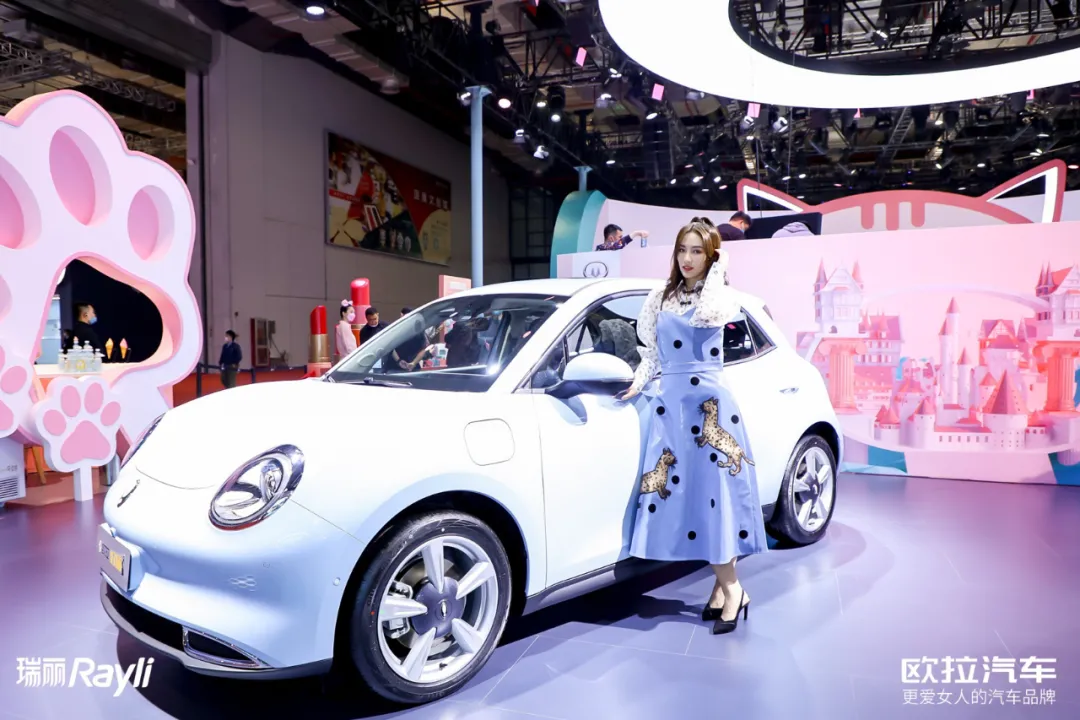Translation
Author: Meimao
Despite the deep connection between cars and women, the automotive industry has been full of arrogance and prejudice towards women for a long time.
Most of what we hear about “cars and women” is based on gender stereotypes and jokes.
I have heard a joke like this. When asked what car they drive, the husband would mention the brand, engine, configuration parameters, and hundred-kilometer acceleration, while the wife would simply say that they drive a red car.
In fact, women don’t know much about cars (or their consumer interests are not in cars), so female drivers have become objects of ridicule. Sometimes, traffic accidents involving female drivers are even featured in the headlines of social news as “female drivers.”
Until one day, I was surprised to find that the trend has changed.
Many car companies have surrendered to women’s power. Some even announced that they will specialize in building cars for women.
I used to work in a large car factory and studied automobile consumption trends, but I never thought this day would come.
Couldn’t it be that in your eyes, female drivers have improved their driving skills?
Cut ~
Isn’t it because our little girls’ wallets have become fatter?
Women in the history of cars
The earliest highlight connecting women’s names and cars occurred a hundred years ago.
Bertha Benz, the wife of “Father of the Car” Karl Benz, once drove her husband’s “single-cylinder three-wheel” car with two children for more than a hundred kilometers. This was the first “long-distance self-driving tour” in human history.
In fact, in the automotive industry, women have always been a large number of practitioners, including brave female engineers, female designers, female racing drivers, etc.
Overall, their functions have gradually expanded from traditional bosses’ secretaries and assistants to marketing, R&D for human resources, and some women have even become the top leaders of automotive brands.
Let’s take an example relevant to today’s topic.
In the 1920s, Dorothée Aurélie Marianne Pullinger became the manager of Galloway, a brand under the Scottish Arrol-Johnson car factory. Dorothée learned about cars with her father’s support since she was a child. In an environment where men dominated the industry, she continuously fought for women’s rights.
When she became a manager of a brand, she determined to design cars for women.
She designed a smaller steering wheel, a more convenient mid-shift lever, raised the seat, and increased storage space. As a woman, she knew too well about some pain points for female drivers.
 This attempt at creating cars for women is just a small wave in the long history of the automotive industry. Only 4,000 Galloway cars were produced over a few years. Although some car companies started marketing to women or designing for female drivers, it was not a standout feature.
This attempt at creating cars for women is just a small wave in the long history of the automotive industry. Only 4,000 Galloway cars were produced over a few years. Although some car companies started marketing to women or designing for female drivers, it was not a standout feature.
By the way, many people believe that the Beetle and MINI are popular among women, thinking that they were designed for women. This is completely wrong, as both cars are economy models aimed at ordinary families.
Today, Chinese car companies are creating cars for women in response to changes in the consumer market.
Women have gradually moved from being backseat passengers to being the “queens” of the front passenger seat or even taking the driver’s seat and becoming distinguished “female car owners”. Many also like to share their car experiences on social media.
Women have become potential users that car companies are eager to please.
The wave of car companies designing for women is not just a gimmick in my personal opinion.

In the past, car companies said they wanted to focus on female car owners, but when it came to action, they did not follow through.
Most of it was just a marketing gimmick.
For example, using female celebrities like Lin Chi-ling to endorse cars, or Lexus doing a lot of female-oriented events offline, including beauty and art workshops;
Mercedes-Benz launched “She’s Mercedes”, a female-only communication and exchange platform in China at the end of 2015, and proposed that by 2020, women will account for 30% of Mercedes-Benz owners at the strategic level.
Many brands also created car models with personalized designs for women, such as different color palettes or upgraded configurations.
These actions were insignificant and just added some flare.
However, car companies are taking this seriously now.
For example, NIO’s founder, Li Bin, believes that the advantage of electric car architecture can be fully utilized by providing footrests in the front passenger seat, creating a queen’s car.
XPeng Motors founder, He XPeng, revealed that women often have more control over car purchases in a family than men. Furthermore, women’s opinions on car aesthetics are much higher than men’s opinions, so XPeng Motors focused on this idea when designing the front of their cars.
Even the gender of cars has changed unconsciously.In the past, cars were full of masculinity, but gradually became more gender-neutral, and even produced products designed specifically for women. In other words, female car owners in the past were more likely to choose a car and paint it their favorite color, but actually the car itself can be driven by both men and women.
Nowadays, some car models are purely designed for women.
The popular Wuling Hongguang Mini EV has been unintentionally favored by many young women in the past year.
This thing can show a trend: cars originally made for men are deeply favored by women. And car companies have even launched new and modified models specifically designed for women.
Women as Key Consumers – Car Companies Have to Surrender
Car companies dominated by men are surrendering to female consumers, and the reason is clear: women can be the “savior” of the weak auto market.
First of all, male car owners represent a stock market, while female car owners represent an incremental market. Most importantly, female consumers now have more financial resources.
Daimler found that 80% -90% of vehicle purchases in China are influenced by women, and 77% of daily household expenses are managed by women.
Secondly, the status of women in families has been elevated. Women now participate in automotive aesthetics. In the past, car companies only had to please men, but now when couples are getting married and buying cars, they have to consider the opinions of women, at least when it comes to colors they like.
Especially from personal observation, women will become the main purchasers and users of the second family car.
In the era of two or three children, do you still expect the man to drive every time you take the kids out?
Furthermore, the number of single women is increasing, and the pursuit of higher-quality life among “independent women” is stronger. In the past, obtaining a driver’s license was mainly male-oriented, but now, besides female college students, women who have just entered the workplace and even many housewives around the age of forty are taking driving tests, and there are more and more women in their fifties and sixties who are retiring.
There is also an interesting phenomenon, in which a car has become a “vanity standard”. Because cosmetics and designer bags are no longer enough to satisfy women’s social circles. Moreover, the consumption comparison between women may result in a car worth 100,000 yuan receiving more envy and admiration from the same sex, rather than a bag worth 100,000 yuan.
Cars represent freedom, extending the radius of life, conquering a wider world, and increasing the ability to independently deal with more complex and unexpected problems. Especially in industries where traditional men hold absolute dominance, the entry of women has a more obvious and profound demonstration effect among peers.
For Women, Cars Can Be Redefined
Since men are already buying cars, let women who don’t have them also own cars.
Whether it’s single women competing with unmarried men, married women challenging their husband’s driving authority, or even family women becoming the first individual to own a car in their family, car companies must learn to “grab money” from female consumers, otherwise these funds will only flow into other industries.According to the principle of energy conservation, if a car manufacturer cannot achieve this, it will definitely shrink and decline.
Men care about cost-effectiveness, while women do not really care about the cost-effectiveness of electronic and mechanical products. Women may only care about the cost-effectiveness of cosmetics, but they still buy expensive luxury goods, which shows that luxury goods are affordable for women. Therefore, car manufacturers can also create cars as luxury goods.
Luxury brands, like Hermès bags and Cartier watches, can attract female consumers through luxurious appearances and exquisite interiors.
In addition, the luxury goods that women pursue are not necessarily cheaper than a car.
In the Chinese market, it is interesting that women have a high acceptance rate for domestically produced electric vehicles and do not have any resistance towards them.
This is because women practically view domestically produced electric cars as commuting tools, enhancing the consumer attributes.
I even believe that this is precisely because many female car owners do not understand the hierarchy of traditional fuel car brands and thus do not have the burden of brand attachment when buying domestically produced electric vehicles.
Moreover, electric car license plates are easier to obtain than fuel car license plates, and currently there are not many options for electric cars, therefore the differentiated competitive advantages of domestically produced electric vehicles become very evident.
As incomes increase, it is not difficult for female car owners to spend tens of thousands of dollars on an electric car and replace it in a few years.
All of this fundamentally lies in a change of attitude.
Private cars have slowly transformed from low-frequency high-priced household consumer goods to fast consumer goods. Since these cars are replaced in a few years, choosing a car is not as complicated and difficult.
With the development of contemporary mindsets and technology, such as automatic parking becoming a standard feature which solves the parking problem faced by women who lack strength, more and more women are becoming the mainstream market.
It is not surprising that all car manufacturers are turning towards the “era of women,” since those who have female car owners, have the world.
This article is a translation by ChatGPT of a Chinese report from 42HOW. If you have any questions about it, please email bd@42how.com.